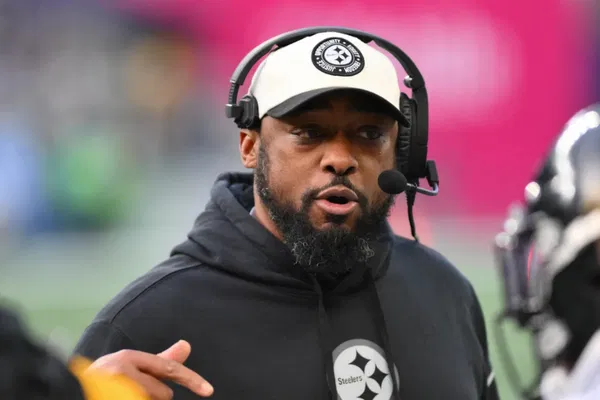
Aaron Rodgers made headlines this week during his appearance on The Pat McAfee Show with a cryptic yet telling statement: “I haven’t felt like I owed somebody any decision at some point.” His laid-back, open-ended response gave no indication of whether he plans to retire or return in 2025. That lack of commitment, though, might have grabbed the attention of Pittsburgh Steelers head coach Mike Tomlin, especially given the current uncertain state of the team’s quarterback situation.
Right now, the Steelers’ quarterback depth chart is anything but stable. Justin Fields is no longer in the picture, Mason Rudolph remains on the roster but seems disconnected from the team, and Russell Wilson has moved on. Team president Art Rooney II attempted to calm the storm by claiming, “the plan is coming together,” but the reality behind the scenes suggests otherwise.
Amid all this, Pittsburgh made a quiet yet strategic move by acquiring Sam Howell. Though overshadowed by the Rodgers speculation, Howell’s arrival may turn out to be the most significant shift. Originally not even on the trading block, Howell was suddenly made available by the Seahawks. In 2023, he led the NFL in pass attempts (612), endured a staggering 65 sacks, yet still put up nearly 4,000 passing yards and 21 touchdowns—more than Fields and Wilson combined.
So why would he be heading to a team still unsure about its QB1? The answer could lie in the possibility that Howell is the contingency plan—should Rodgers decline to join. Howell’s experience and resilience through a difficult season make him an intriguing option. If given proper support, he might thrive in Pittsburgh’s system. That’s something Tomlin may be counting on.
The move wasn’t made lightly. Pittsburgh reportedly showed significant intent, actively pursuing Howell and agreeing to his $4 million cap hit for 2024. That’s a larger financial commitment than they made for Fields or Wilson. And while Rodgers left the door ajar with his vague comments, Pittsburgh seemed to go all in on Howell as a more dependable alternative.
The Steelers find themselves at a crossroads: pursue Rodgers, take a gamble on his wavering commitment, or settle into a safer but potentially less flashy route. The other name in the mix? Kirk Cousins. The veteran QB, currently recovering from an Achilles tear, carries a hefty $40 million price tag and a reputation for not delivering in the postseason. Despite that, he offers structure and reliability—something Rodgers doesn’t always bring.
Rodgers, in contrast, has floated a willingness to play for just $10 million and claims to have a strong rapport with Mike Tomlin. Yet his messaging remains murky. He talks about personal challenges and wanting to “keep the lines of communication open,” which leaves the Steelers in limbo as the draft looms.
If Pittsburgh turns to Cousins, they’d have to not only handle his high salary but also negotiate his exit from Atlanta—where the Falcons seem unwilling to part with him despite also having a new starter. Cousins is the safe pick: punctual, consistent, and drama-free. Rodgers offers a higher ceiling but carries with him the risk of unpredictability.
The Steelers aren’t just deciding between quarterbacks—they’re weighing the cost of stability against the potential for greatness. It’s no longer about preferences; it’s about what the franchise is truly willing to invest—either in dollars or in patience. One path may lead to a superstar, the other to a reliable veteran. But if they wait too long, Pittsburgh could find itself without a viable quarterback option altogether.